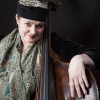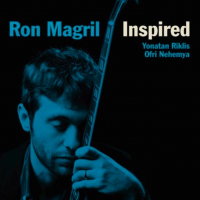Howard Johnson and Gravity
For the listener, there is nothing quite as exciting as the sound of a tuba orchestra, a bone-deep thrill as a battalion of those deeply resonant instruments carry the song’s melody instead of merely supporting it. Acclaimed horn man Howard Johnson recognized the possibilities more than 45 years ago when he conceived of the ensemble that has become GRAVITY.
“In 1967, there were getting to be tuba players with solid high and low registers, and I began to think of writing for a multiple tuba ensemble,” he said. “It could encompass at least three-and-a-half octaves and allow tuba players the jazz expression I had always encouraged.”...
read more
Howard Johnson and Gravity
For the listener, there is nothing quite as exciting as the sound of a tuba orchestra, a bone-deep thrill as a battalion of those deeply resonant instruments carry the song’s melody instead of merely supporting it. Acclaimed horn man Howard Johnson recognized the possibilities more than 45 years ago when he conceived of the ensemble that has become GRAVITY.
“In 1967, there were getting to be tuba players with solid high and low registers, and I began to think of writing for a multiple tuba ensemble,” he said. “It could encompass at least three-and-a-half octaves and allow tuba players the jazz expression I had always encouraged.”
A year later, between touring and recording sessions, Johnson put together the group’s forerunner, Substructure, with tuba colleagues Dave Bargeron, Morris Edwards, Jack Jeffers and Bob Stewart. The group played Sunday afternoons at Slug’s, a very hip jazz club on Manhattan’s Lower East Side in June and July of 1968.
“GRAVITY was formed specifically to explore and exhibit our capabilities,” Johnson said. “The tuba choir concept was a natural since the range was there and the players were there, with more on the way. We were just as surprised as everyone else hearing our ensemble sound for the first time – stunned really, but oh, so satisfied. The possibilities seemed endless.”
With its own unique sound, the band developed a following, soon expanding to six tubas and an electric rhythm section. They played the Fillmore East in 1969, “before anyone ever heard of fusion,” Johnson noted.
Surprisingly, the sound was slow to catch on beyond the jazz community, until Taj Mahal came to a rehearsal in 1970. He immediately signed them up to play on his live record The Real Thing, and participate in the tour to support it.
After that, people got to know Johnson, who subsequently did horn arrangements for Paul Simon, Paul Butterfield and John Lennon. These associations led to Johnson's Saturday Night Live Band and his tuba selections for Phoebe Snow and Chaka Khan. But 26 years would pass before Johnson received his first major label recording opportunity.
GRAVITY's self-titled 1996 debut recording with Verve Records was sweet vindication for Johnson: a brilliant sound whose time had finally come. Along with the ensemble playing, each member had solo spots that revealed their particular musical genius. A jazz fan called it “The greatest tuba/jazz album ever”. Although jazz giants Miles Davis and Gil Evans experimented with tuba melodies in the 1950s, it was now showcased on a scale equal to its potential. (An interesting sidenote: five of the current tuba players in GRAVITY participated in Gil Evans collaborations over the years.)
The band’s current lineup -- original members Johnson, Stewart, and Bargeron, tubaists Earl McIntyre, Joseph Daley (both joined in 1971), and ensemble lead Velvet Brown along with Carlton Holmes on piano, Melissa Slocum on bass, J.T. Lewis on drums and Nedra Johnson on vocals– is poised to release a new record in the spring of 2014. The CD has wonderful new arrangements by Johnson including a couple of original compositions and an exciting arrangement of McCoy Tyner’s “Fly with the Wind.”
show less

















